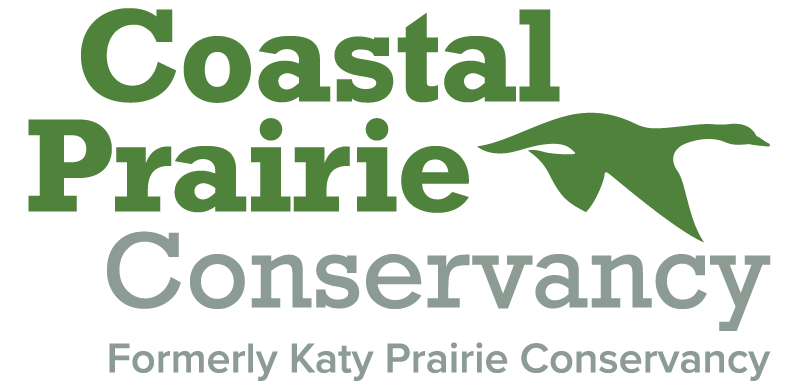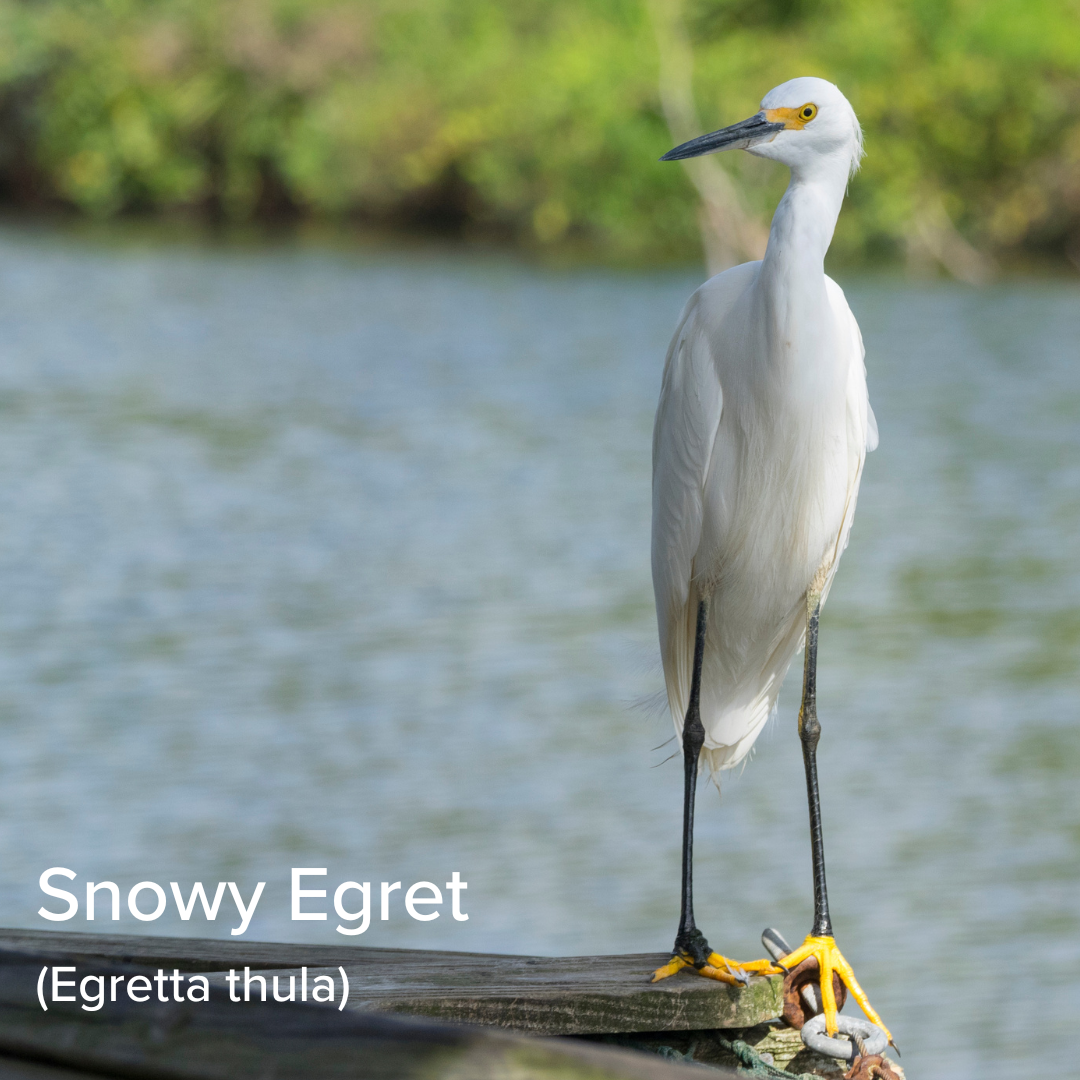State of the Species: Snowy Egret (Egretta thula)
Written by: Kaytlin Cowser, Guest Contributor
Picture this: It’s a beautiful fall day along the Texas Gulf Coast. While enjoying the sun and listening to the peaceful sounds of waves crashing along the shoreline, your eyes are drawn towards the sky. A beautiful flock of birds fly overhead towards the coastal marshes just behind you. You grab your binoculars, zoom in, and see multiple species of medium white waterbirds. A black bill and yellow feet give away the snowy egret immediately.
Snowy egrets are a migratory waterbird belonging to the Ardeidae family along with other egrets, herons, and bitterns. This majestic bird gets its name from the beautiful snow-white plumage on its medium-sized body. Their narrow, lengthy neck holds up a small head with a long black bill. The base of their bill and skin around their eyes are a vibrant yellow hue while their thin legs are long and black with feet in the same vibrant yellow seen on their face. Most of the snowy egret’s twenty-two-year average lifespan is spent as a silent bird, but they use their loud squawking call during mating season and to defend territory. A highly social bird, snowy egrets live in colonies alongside many other bird species including other egrets and herons. Easily confused for their cousin, the great egret, snowy egrets can be identified by their reversed bill and feet color.
The snowy egret’s range is mainly along coastlines throughout North and South America in wetlands, marshes, swamps, lakes, ponds, mudflats, and tidal zones. The species can also be found further inland along river drainage basins and shallow lakes. Texas and other southern states have dense populations of snowy egrets, but Texas is mainly used as a migratory region and safe haven for breeding. Breeding regions are mostly along the coast with some inland breeding in northeast Texas and northern Louisiana. Inland breeding in Texas depends on the availability of crayfish which are used in abundance for their chick’s diet. Crayfish populations are reliant on rainfall during spring and early summer, making the snowy egret’s diet highly dependent on weather patterns.
Snowy egrets are known for their very active feeding style. They hunt in shallow waters eating a variety of fish, insects, crustaceans, frogs, small reptiles, and worms. From patiently waiting for prey to chasing after it wings wide-open to more tactical methods like using their feet to stir up bottom muck to flush out aquatic prey towards to surface, the snowy egret has lots of tricks to ensure a full stomach at the end of the day.
Photo by George Phile
In spring, mating season begins as the males fly over their nesting sites, usually in trees or shrubs and occasionally on the ground. Once the location is secured, males begin building a nest made of sticks, grasses, sedges, rushes, and Spanish moss. While building the foundation for the nest, the male snowy egret is also looking for a mate. Raising his plume feathers, pointing his bill skywards, and pumping his head up and down while making loud squawking matting calls, he attempts to attract a female. This loud display of courtship is accompanied by circling high in the air around the chosen nesting area and tumbling downward to the ground. After bonding with a female, they become mates for life, spending most of their time together. The female egret takes over building the remainder of the nest, leaving the male to source the building materials. Once the nest is complete, the female snowy egret lays her single brood clutch, containing two to six eggs. Males and females take turns incubating their eggs over a period of about twenty-four days, passing a stick to indicate who is incubating at any given time. Making sure to keep a tidy nest, they use their bills and feet to remove any eggs shells or debris during nesting. Hatchlings are covered in white down feathers and are continued to be taken care of and fed by both parents until they can fly, around thirty days. Juveniles have dulled greenish legs until they reach maturity and their legs darken to black. Due to the shallow construction of their nests, both parents are needed to defend the nest from predators. Common nest predators of the snowy egrets include large owls, crows, alligators, raccoons, and rat snakes.
Photo by Greg Lavaty
Snowy egrets grow special plume feathers that are long and shaggy on their head, neck, and back during breeding season. In the 19th century, this special plumage was highly sought after in the fashion industry for decorative pieces on women hats and led to the snowy egret becoming endangered. Early conservationists, often merely concerned citizens, were able to pass laws such as the Migratory Bird Treaty Act of 1918 to protect this species. After conservation efforts passed, populations of snowy egrets grew abundantly and stabilized to normal levels. This effort to save the snowy egret contributed to the birth of the modern conservation movement in the United States.
The largest threat now facing the snowy egret is the loss of habitat as well as food competition from other coastal bird species. The loss of wetland habitat from human development and the damaging effects of climate change are direct threats to critical habitat throughout North and South America. As individuals, we can support the conservation of the snowy egret and its habitat in several ways:
· Join volunteer efforts aiming to conserve and preserve coastal wetlands
· Avoid nesting areas during breeding seasons to provide safe areas for the species to thrive
· Keep beaches and marshes clean by picking up trash after visiting
· Prevent pets from roaming free on beaches to avoid encounters with nesting sites
Conservation efforts can often seem out of our personal control, but individual action on a large scale can lead to great impact. By conserving the natural things we love, we will ensure that future generations of Texans know the great beauty of the snowy egret.



